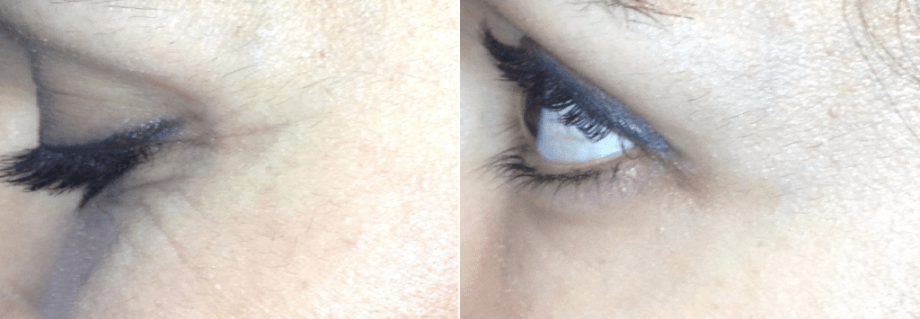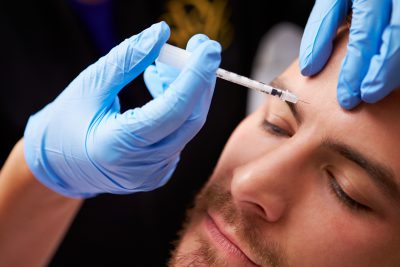Botox is composed of botulinum toxin, derived from Clostridium botulinum bacteria. When injected into a muscle, it functions to temporarily paralyze or weaken that particular muscle. For this reason, Botox is used for cosmetic purposes to improve “hyperdynamic wrinkles”. These are wrinkles formed by muscle movements as in smiling, frowning and raising the eyebrows. It softens but doesn’t completely eliminate “static wrinkles”, which are wrinkles that remain on the face when the face is in resting position. The effects of Botox usually begin 3 to 4 days after treatment, and the maximum effect is achieved by 1-2 weeks. Improvement typically lasts 3-4 months; however, there is individual variation. Follow up treatments are required to maintain the desired results.
Botox is also used for treatment of hyperhydrosis, defined as focal excessive sweating. Botox injected around sweat glands in the skin decreases sweat production and hyperhidrosis. Various treatments exist for hyperhidrosis including over-the-counter antiperspirants, 10-25% Aluminum chloride antiperspirants, Botox injections, RF Microneedling. Surgery is reserved as a last resort with local sweat gland resection or endoscopic thoracic sympathectomy. Results of Botox treatment last up to 6 months.
There are five types of botulinum toxin available in the market:
1) Botox by Allergan
2) Myobloc by Solstice Neurosciences
3) Dysport by Ipsen, Ltd
4) Xeomin by Merz
5) Jeuveau by Evlous
Although all five products are made from the Clostridium botulinum bacteria, the five products are isolated from different strains of bacteria, have different molecular structures, and attach to different parts of the nerve. Dysport works slightly quicker than Botox, but Botox may last longer than Dysport. Both Botox and Dysport advertise results for up to four months.
Xeomin may last slightly longer than Botox, according to the American Academy of Facial Esthetics. Xeomin contains no additives and thus does not require refrigeration. Some have suggested that people are less likely to become resistant to Xeomin injections because of its purity. Botox, Dysport, Xeomin and Jeuveau are all made from botulinum toxin type A, while Myobloc contains botulinum toxin type B. Some have suggested that Myobloc may help with people who’ve become immune to Botox and Dysport.

